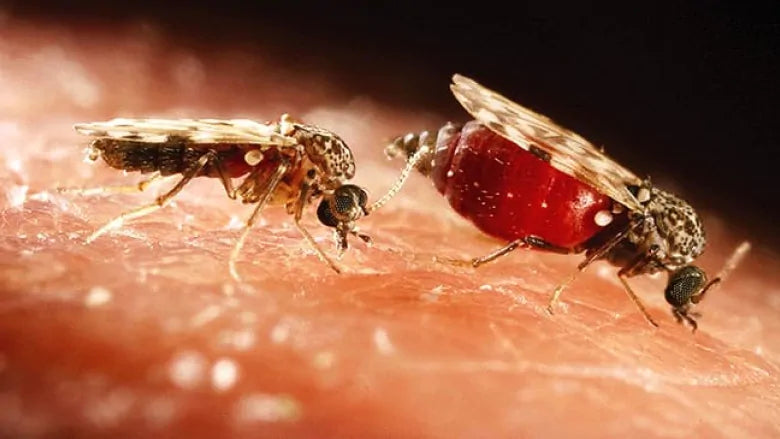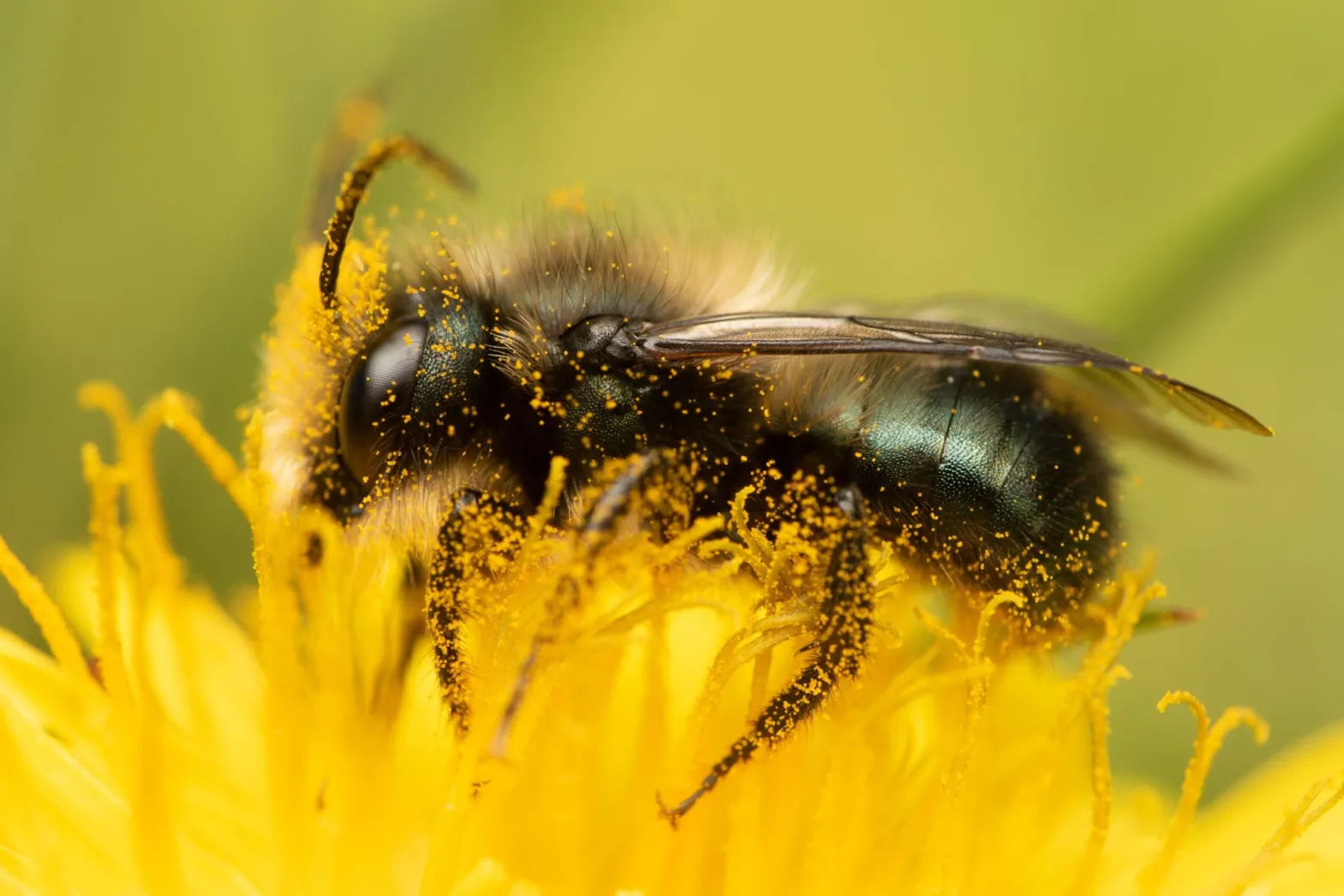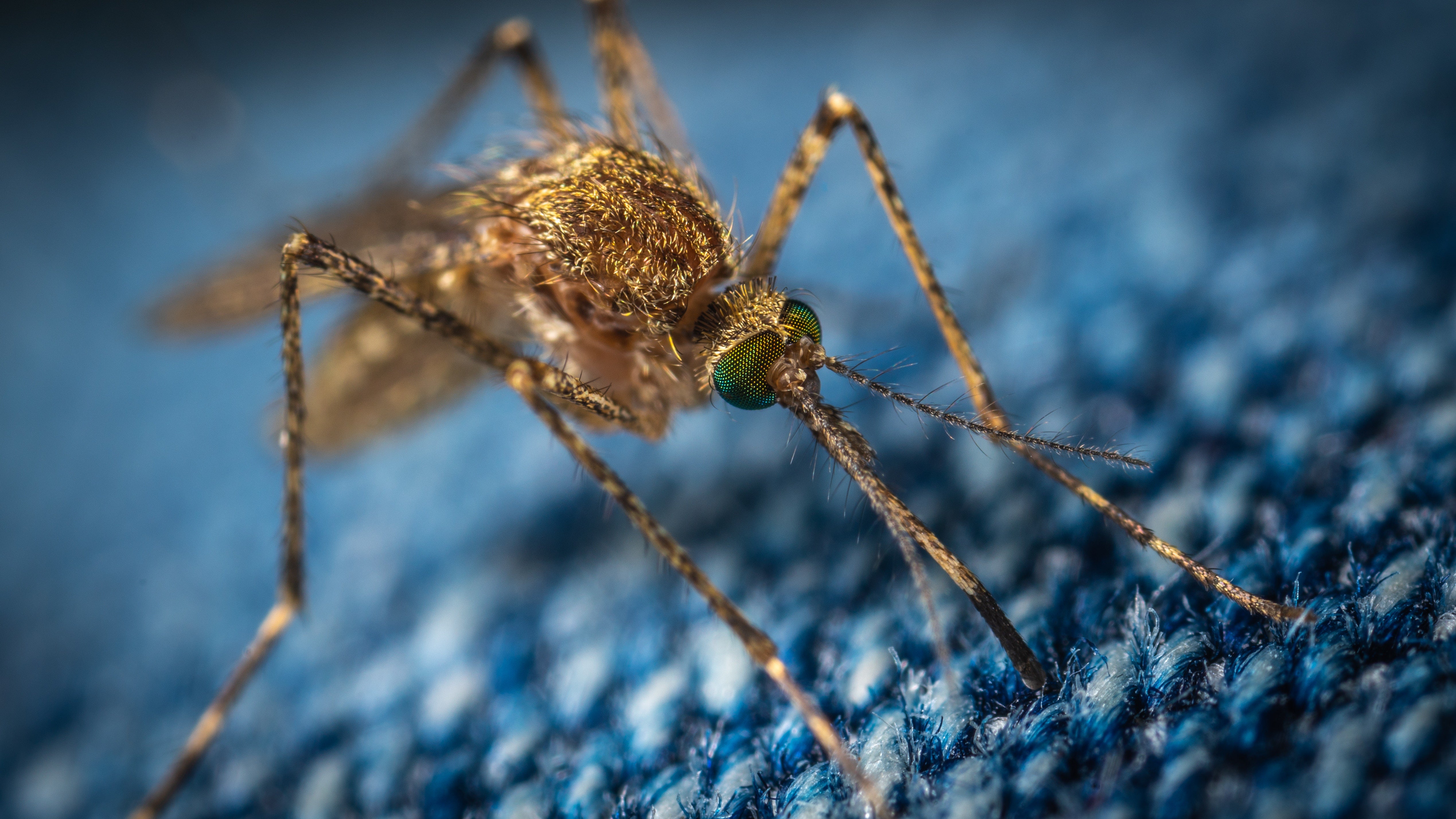Despite the differences in their appearance, no-see-ums and mosquitoes share a multitude of common characteristics, most notably the way in which they source, locate and feed on their prey.
Both mosquitoes and various species of no-see-ums, or biting midges, are able to pinpoint their next meal by detecting the heat and carbon dioxide exhaled by vertebrates, as well as increased concentrations of lactic acid, typically found in those who are pregnant, are taller or have higher BMIs. And just like in mosquitoes, it is the female no-see-um that is responsible for the irritating bites you feel during your balmy summer evenings. This is because both female mosquitoes and no-see-ums require a rich protein source, aka a blood meal, in order to provide adequate nutrition to their offspring.

So how best to deal with these tiny insects that often go completely unnoticed, at least until they’ve already bitten you? And what about bug zappers and UV light? Are these effective methods of ridding your backyard of no-see-ums?
Are No-See-Ums Attracted to Bug Zappers?
While natural CO2 emissions and human body heat seem to be the primary drivers of no-see-um attraction, there is evidence to suggest that the hemophagic (bloodsucking) pests can also be lured in with traps that utilize ultraviolet light.
In March 2011, Robert Currier, a former researcher for the University of Florida, conducted a study to evaluate the efficacy of UV light on a species of biting midges known as Culicoides furens. The summary of his findings indicated that “C. furens demonstrates a significant attraction to ultraviolet radiation versus visual light.” Currier went on to note that “the construction of ultraviolet light source traps with air intake devices and collection bags could provide significant relief to those areas with severe biting midge infestations.”

While limited in scope, Currier’s research suggests that not only are no-see-ums attracted to UV light, but that by extension, bug zappers like the Zap Trap from Best Bee Brothers can be an effective tool in preventing biting midge activity.
Exploring Alternatives to Bug Zappers
If no-see-ums are a problem in your area but you prefer to use a deterrent instead of a bug zapper, you can use the bugs’ behavior against them. No-see-ums are known to be very weak fliers, so using an electric fan on a high setting can blow them off course and away from you. As with any pest, the exclusion method is an excellent first line of defense. Be sure to check your window and porch screens for signs of wear and tear. Patch any holes or replace damaged screens to help deter no-see-ums from entering your home. Read more about these pests in our post about no-see-um bites.
When it comes to outdoor protection, we prefer to go the holistic route whenever possible. Rather than reaching for the usual mosquito repellent or DEET spray, consider an alternative like our essential-oil-based Natural No-See-Ums Natural Repellent Spray, which offers comparable protection, minus all the harmful ingredients. It works for mosquitoes and gnats too.
Finally, removing no-see-um breeding grounds from your yard is also an excellent way to help stem the flow of no-see-um activity when the weather heats up. These nesting sites are often similar to those of mosquitoes and can include locations like tree hollows, flower pots, natural ground depressions, and other areas capable of maintaining a shallow pool of still water. While it’s nearly impossible to remove all potential breeding sites for no-see-ums in your yard, removing the obvious choices makes your home that much less attractive to potential biters.
- J. E. Cilek and D. L. Kline, “Adult Biting Midge Response to Trap Type, Carbon Dioxide, and an Octenol-Phenol Mixture in Northwestern Florida,” Journal of the American Mosquito Control Association 18, no. 3 (September 2002): 228–31, https://pubmed.ncbi.nlm.nih.gov/12322947/.
- Ian Sample, “Midges Favour Tall Men and Overweight Women, Study Finds,” Guardian, July 28, 2010, https://www.theguardian.com/environment/2010/jul/28/midges-tall-men-overweight-women.
- Robert Currier, “Response of Culicoides Furens (Poey) to Ultraviolet and Visual Light Sources in a Nocturnal Environment,” (March 18, 2011): https://www.researchgate.net/profile/Robert-Currier/publication/235341076_RESPONSE_OF_CULICOIDES_FURENS_POEY_TO_ULTRAVIOLET_AND_VISUAL_LIGHT_SOURCES_IN_A_NOCTURNAL_ENVIRONMENT/links/02bfe511124ae7b9f6000000/RESPONSE-OF-CULICOIDES-FURENS-POEY-TO-ULTRAVIOLET-AND-VISUAL-LIGHT-SOURCES-IN-A-NOCTURNAL-ENVIRONMENT.pdf
- Currier, “Response of Culicoides Furens.”









Leave a comment
All comments are moderated before being published.
This site is protected by hCaptcha and the hCaptcha Privacy Policy and Terms of Service apply.